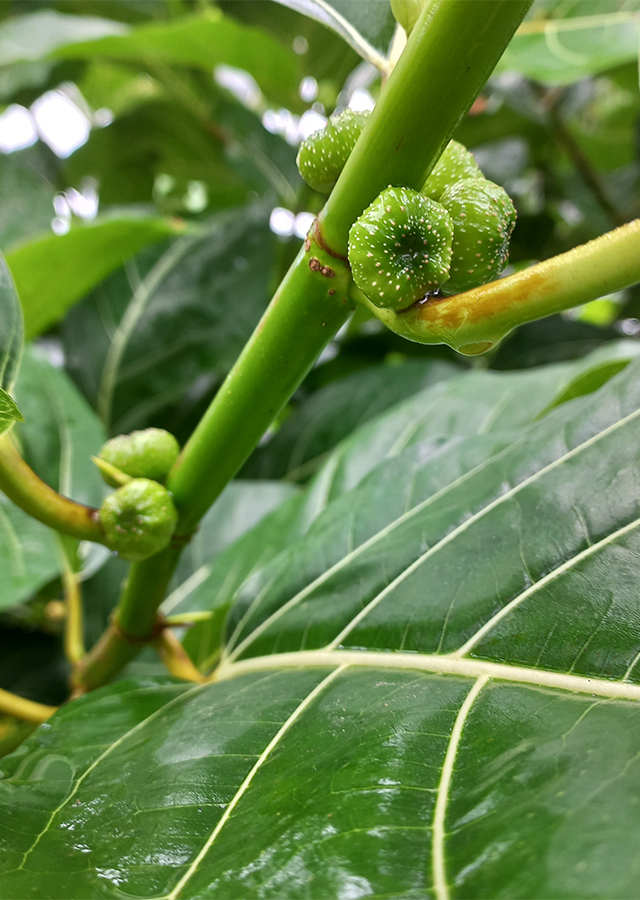Traditional Herbs from Ficus septica
boil
- Prepare \u00b1 5 g fresh leaves of awar-awar.
- Wash until clean.
- Crush and add a little water or oil and mix until it forms a paste.
- Put it on the boil." ],"food_poisoning
- Prepare enough awar-awar roots, wash them clean and mash them until smooth.\u00a0
- Add a little water and blend again.\u00a0
- Squeeze the paste roots until you get water and pulp separately.
- Drink the juice.
What is Ficus septica Looks like??



Parts of Ficus septica that could be used
- Leaves
- Bark
- Fruit
- Latex
- Roots
Ficus septica Distribution
Awar-awar is widespread in Japan (Ryukyu Islands), Taiwan, Malaysia, Indonesia, the Philippines, Papua New Guinea, northern Australia (Queensland), the Solomon Islands, and Vanuatu. This plant has value as a traditional medicinal ingredient which is believed to be able to treat various diseases. Almost all parts of this plant can be used as traditional medicine, but excessive consumption can cause side effects and even death. Apart from that, awar-awar is often used as a water conservation plant, and the wood can be used to make keris warangkas. The keris made of awar-awar wood is quite beautiful because it produces a pattern called nginden.
Agroecology of Ficus septica
Awar-awar is usually found growing in secondary rainforest, scrub vegetation, open forest at an altitude of up to 1,800 m above sea level. This type often grows on river banks and is able to grow in various types of soil.
Morphology of Ficus septica
- The stem is crooked, soft, the twigs are round cylindrical, hollow, bare, gummy white to yellowish. The surface of the stem is pale brown to yellowish brown." with a cordate base (shaped like a heart) to pointed, the tip of the leaf is tapered, the edge of the leaf is flat, the upper surface is shiny dark green, with many pale spots, the surface the bottom is light green, glabrous (not hairy). Has reddish colored stem leaves (stipules). "The compound flowers are arranged in pairs, have short stems, at the base they have 3 protective leaves which are light green or gray green.", "Pot-type fruit, fleshy, ripe fruit is whitish with yellowish spots, rough texture and spots.
- Seeds are numerous and small.
Cultivation of Ficus septica
Propagation is generative (seeds) and vegetative (cuttings).
Ficus septica, more details :
Chemical Content of Ficus septica
Roots: sterols and polyphenols. Stem: phenantroindolisidin (ficuseptin B, ficuseptin C, ficuseptin D, 10R,13aR-tylophorin N-oxide, 10R,13aR-tylocrebrin N-oxide, 10S,13aR-tylocrebrin N-oxide, 10S,13aR-isotylocrebrin N-oxide, and 10S,13aS-isotylocrebrin N-oxide). Leaves: flavonoid compounds genistin and kaempferitrin, coumarin, phenolic compounds, pyrimidines, antofin alkaloids, 10S,13aR-antofin N-oxide, dehydrotylophorin, ficuseptin A, tylophorin, 2-Demetoxytylophorin, 14α-hydroxyisotylopcrebin N-oxide, triterpenoid saponins, sterols , stigmasterol, β-sitosterol, isotylocrebin alkaloids, and tylocrebin.
Benefits of Ficus septica
Treating skin diseases, appendicitis, treating boils, poisonous snake bites, shortness of breath (asthma), antidote for fish poison, medicine for vomiting, swelling, headaches, colds, coughs, fever, dysentery or diarrhea, urinary tract infections, treating dengue fever, preventing cancer, healing wounds, food poisoning, treating trichomoniasis. Has antirheumatic, antioxidant and diuretic activity.
Simplisia of Ficus septica
Another Facts for Ficus septica :
Synonym of Ficus septica
Covellia leucopleura (Blume) Miq., Covellia rapiformis (Roxb.) Miq., Ficus brunnea Merr.
Habitus of Ficus septica
Tree. Annual tree, between 1-5 m high, in the forest can reach 25 m
Habitat of Ficus septica
- Riverside", "Forest", "Land



No comments:
Post a Comment